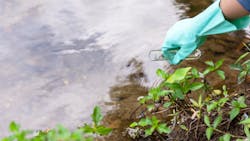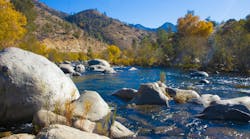Study: Citizen science can help monitor intermittent rivers
A new paper in BioScience proposes tackling the problem of unmonitored and undermanaged river ecosystems — intermittent rivers and ephemeral streams — with citizen science, according to a press release from the American Institute of Biological Sciences.
Intermittent rivers and ephemeral streams are the world’s dominant river ecosystem, yet monitoring and management typically focus on rivers that flow year-round.
The paper’s authors discuss the results from a new app, DRYRivERS, which allows scientist and nonscientist users alike to record data on ephemeral streams and intermittent rivers. The data are then made available to various experts.
Over a one-year period, the authors recorded "3600 observations from more than 1900 river reaches across 19 countries and four continents."
Such data is essential for managers and ecologists, say the authors, because current "monitoring schemes, approaches, and tools are designed for perennial rivers, rarely reflecting the prevalence of intermittent rivers and ephemeral streams or their hydrological characteristics and biological communities."
The authors share three case studies, highlighting the potential for DRYRivERS and similar apps to inform river regulation, aid the mapping of ephemeral waterways, and assist in the modeling of hydrological states — such as the drying of rivers in the face of climate change.
In addition to helping managers and researchers, say the authors, the benefits of community monitoring may accrue among the citizen scientists, themselves. Such efforts are "an excellent way of raising people’s awareness" and helping them reconnect with rivers and streams "by emphasizing the importance of the water resources and any resulting restrictions that the authorities may implement in response to more frequent or more dramatic drying."
Over the longer term, Truchy and colleagues anticipate even greater benefits from consolidating traditional ecological and citizen science data in the form of a universal waterways map with broad applications.


